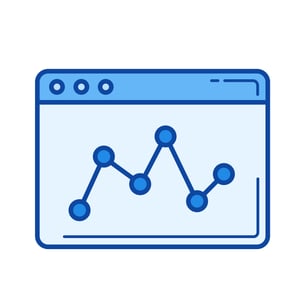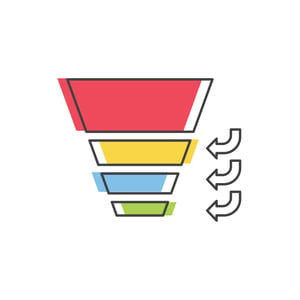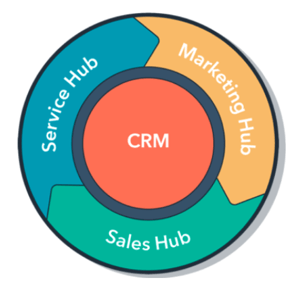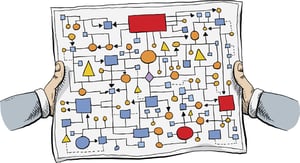
We've all been there. Your marketing team spends months carefully developing a full-scope campaign strategy. Everyone believes this concept will successfully drive link clicks and contact form submissions. But things don't work as expected.
Weeks after launching the advertising campaign, there isn't a single form submission. Your team is devasted! Your manager expresses concerns about wasted time, resources, and of course, money. Herein lies the importance of tracking your marketing efforts.
 Why Track Your Marketing Efforts?
Why Track Your Marketing Efforts?
Over time, tracking your marketing efforts provides invaluable insights into what has worked in the past and what hasn't. This knowledge is the first step in executing a data-driven content strategy.
Don't just take our word for it. Here are a few statistics that support our claims:
- 75% of companies see increased engagement when they use data-driven marketing. (Attomdata)
- Companies that adopt data-driven marketing are 6x more likely to be profitable year-over-year. (Forbes)
- Accuracy and speed are the most oft-cited benefits of data-driven marketing. (Adobe)
- 64% of marketing execs say data-driven marketing is vital in this economy. (Invesp)
 Understanding the Customer Journey
Understanding the Customer Journey
The customer journey describes each interaction someone has with your brand, product, or service. It is a road map that documents the full experience of becoming a customer. From seeing a web advertisement to maturing into a brand loyalist, the customer journey defines each step along the way.
Most commonly, brands choose to follow two models to map and plan out their customer journey. These options include:
- The Sales Funnel
- The Flywheel
 The Sales Funnel
The Sales Funnel
A more traditional approach to customer experience, the sales funnel is usually broken down into three categories.
People enter through the top of the funnel (awareness stage), move to the middle of the funnel (consideration stage), and exit through the bottom (conversion or decision stage.)
 The Flywheel
The Flywheel
HubSpot's flywheel is a model that illustrates the momentum found in
paying attention to satisfied customers. These individuals, often ignored after their initial purchase, drive referrals, and repeat business and should not be overlooked! The flywheel uses a circle to show a customer's journey should never end.
Regardless of which approach your team chooses to take, it is essential to remember each stage should signal different meaningful customer interactions.
Pro Tip: 👍
When creating marketing materials, always think of your target audience and where they are in their journey. For a successful inbound and outbound marketing strategy, brands must make the right content, for the right people, at the right time.
What Middle-of-Funnel Content Should Look Like
As lovely as it would be to know precisely what type of content will move people down the funnel quicker, there is no magic crystal ball. Luckily, there are many best practices brands one can use to increase chances for success.
The key to success in planning content for any stage, you must first understand your target audience! We have some resources to help you get started if you haven't taken this important step:
To learn more about what top-of-funnel (or awareness stage) content should look like, check out our other article.
When individuals reach the middle-of-funnel stage, it's far different from those in the awareness and conversion stages. At this point in the funnel, you have captured someone's attention. They know they have a problem and are looking for a brand, product, or service to solve their challenges.
The middle-of-funnel audience is weighing their options to see what the best solution is. While the awareness stage is designed to educate a prospect, the middle-of-funnel is the stage where you want to showcase why your brand is the best fit for their needs.
Middle-of-funnel content may include:
- Email newsletter signup offers containing exclusive benefits.
- Downloadable guides with valuable advice or resources.
- Product or service comparisons with other competitors.
- Case studies to show brand effectiveness.
- Customer testimonials to promote the experiences of others.
Pro Tip: 👍
Most importantly, take this time to build a personalized relationship with audiences at this stage. This step really makes a difference! The power of trust and familiarity cannot be underestimated in the individual's final purchase decision. Work on establishing trust and promote continuous engagement!
 Data Worth Tracking
Data Worth Tracking
There are specific data sources marketers can track to showcase marketing efforts when presenting reports to their boss or investors.
Here are a few examples of data points Rizen finds helpful in measuring middle-of-funnel marketing efforts.
Email Engagement Rates
Email engagement rates are a metric illustrating how effective your email marketing is at engaging your contact list.
It tracks various factors of your email results, such as:
- Open rates
- Link clicks
- Call-to-action clicks
Call-to-Action (CTA) Clicks
Every marketing content type should include a call-to-action or a next step someone can take to further interactions with your brand. For example, a CTA on a blog post or webpage is for site visitors to contact the company for more information. This step makes tracking call-to-action clicks a significant data source to know what content generates the most form fills or phone calls.
Downloads
Does your website offer a type of downloadable content such as an eBook, whitepaper, report, PDF, or other files provided as a download? If so, start tracking how often this content is downloaded. This insight can help your team determine what type of content upgrades your audience is most interested in.
Marketing Qualified Leads (MQLs)
The phrase "qualified lead" is a term often used by many B2B organizations. However, if you asked a sales team to share their definition of a qualified lead, it would be different from how their marketing team would describe one. For that reason, there are sales qualified leads (SQLs), and marketing qualified leads (MQLs).
MQLs are people that have expressed interest in your company, product, or service. Perhaps it is filling out an online contact form or replying to a marketing email. Marketing qualified leads are sent to the sales team to further this relationship and become an SQL.
By tracking MQL metrics, organizations know where leads are in the customer journey and how to move them down the funnel. Additionally, following this data source shows marketing teams how many qualified leads they must generate and convert to SQLs to help reach business goals.
Paid Landing Page Conversion Rate
Your paid landing page conversion rate indicates how many site visitors took the desired action from a paid advertising campaign - such as Facebook and Google Ads. To track conversions, create a Google Analytics goal or sign up for Hubspot and connect it to a thank-you page. This step will help you monitor how many visitors of a landing page completed a form, signed up for your email list, downloaded a lead magnet, and more.
Cost Per Lead (CPL)
This metric measures how cost-effective your marketing efforts are. Calculate this metric by dividing your marketing spend by the number of leads generated from that campaign. Tracking your CPL gives marketing teams an actual dollar figure to know how much they should budget for when acquiring new leads.
Average Lead Score
Lead scoring is a numerical value that shows the quality of marketing leads based on predetermined criteria. An average lead score measures the quality of leads collected over a given period (week, month, quarter). It is a cumulative measure of how promising and valuable your leads actually are. This insight saves organizations time and money to focus on specific prospects that are most likely to convert to customers based on their lead score.
 Make Data Reporting a Priority This Year
Make Data Reporting a Priority This Year
Consumer behaviors and purchasing patterns are changing now more than ever, thanks to dramatic shifts in how customers interact and purchase.
Your marketing efforts must evolve to stay relevant and competitive. Customers everywhere want to work with brands that they can relate to and recognize things have changed.
For this reason, the foundation of any marketing strategy in 2021 is undoubtedly data. What worked in years past will not work today.
By continuously tracking your marketing initiatives, you no longer have to depend on guesses and assumptions about success. The result is a precise measurement of what efforts are effective in generating the greatest return.




.gif?length=600&name=Data%20Bottom%20of%20funnel%20hero%20(1).gif)


No Comments Yet
Let us know what you think